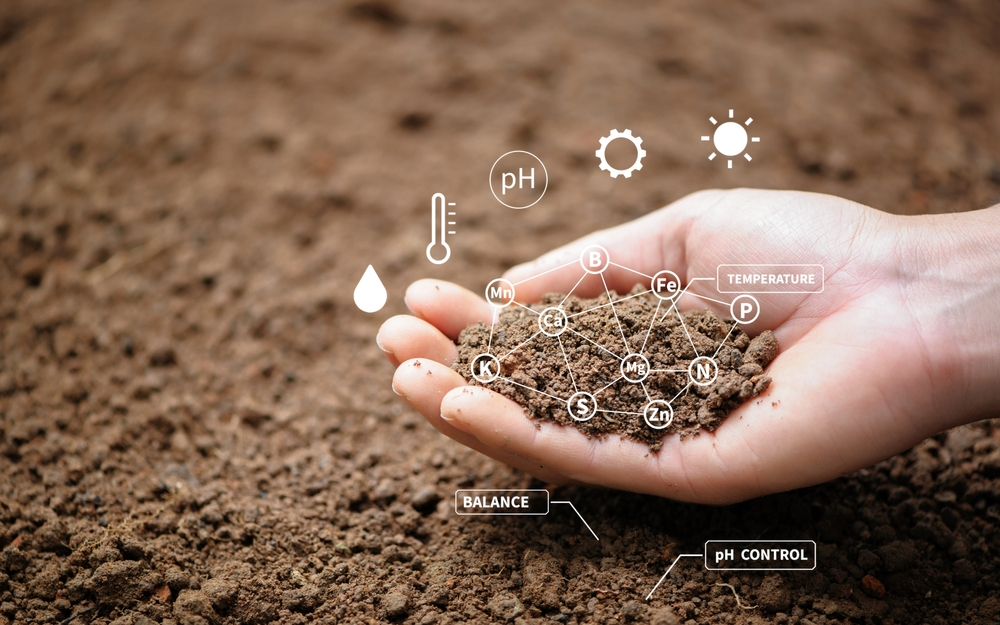Let’s explore tips to improve soil health.
As a farmer, one of your most valuable resources is your farmland’s soil health. Healthy soil is essential for producing high-quality crops, and the key to maintaining it is understanding the fundamentals of soil health. But how do you know what to do? Fortunately, there are some straightforward steps you can take to improve and enhance the soil quality your farmland.
Best Tips To Nourish And Improve Soil Health
Here are eight tips to nourish and improve soil health for your farmland. From understanding the importance of soil organic matter to selecting the right cover crops, these tips will help you get the most out of your land and produce the best possible harvest.
Understand The Importance Of Soil Organic Matter
The first step to improving the health of your farmland is to understand the importance of soil organic matter. Soil organic matter is organic material in the soil that has decomposed and is used by the soil’s microbes.
On average, the organic matter in agricultural land is very low, ranging from 1% to 2%. However, the ideal level of soil organic matter is 5% at a minimum. Soil organic matter is essential because it helps to improve soil structure, fertility, water retention, and nutrients.
Add Nutrients To The Soil
After you understand the importance of soil organic matter, the next step is to add nutrients to the soil. The nutrients required by your crops include nitrogen, phosphorus, and potassium. An ideal soil will have the correct pH level, which will help it to absorb the nutrients from the ground and make them available for your crops.
Composting your soil is one method of achieving this. Composted materials like grass clippings, leaves, and vegetable waste are great sources of nutrients for your soil. Another option is to spread manure on your ground, which will also help to add nutrients.
Use Cover Crops To Protect And Nourish The Soil
While adding nutrients to the soil, you can also protect the field by using cover crops. Several cover crops include legumes, clovers, and cereal rye. Legumes are a great choice because they help to add nitrogen to the soil. Cereal rye is another great option because it grows quickly and is also a good source of carbon, which is great for improving soil structure.
Clover has the added benefit of attracting pollinators to your farm, which will help to maintain a healthy ecosystem. When you use cover crops, you’re also protecting the soil from erosion, water loss, and nutrient loss.
Practice No-Till Farming
Another way to improve the health of your soil is to practice no-till farming. No-till farming is a form of organic farming that doesn’t till the soil, which helps to reduce soil erosion. During the growing season, you can add compost, manure, or cover crops to the soil surface to enhance the health of the soil.
Doing so will protect the soil from erosion and enrich it with nutrients and organic matter. In the fall, you can cover the soil with mulch to protect it from the cold and retain moisture.
Add Compost Or Manure To The Soil
Another way to improve the health of your soil is to add compost or manure to the soil. Compost is a great way to improve the structure of your soil and add nutrients, while manure is a great source of nitrogen.
When adding compost or manure to your soil, you want to make sure it’s well-broken down and not fresh manure. Fresh manure can burn your plants. Manure or compost feedstocks should be aged for at least six months before application.
Water Your Farmland Properly
Another way to improve soil health is by choosing the right type of irrigation for your farmland. If you’re growing crops in a river basin, you’ll want to use flood irrigation. Otherwise, you can use a sprinkler or drip irrigation. The most important thing to consider when choosing a type of irrigation is the soil type. Different soil types will require other irrigation methods. When watering your soil, you want to ensure it’s properly moistened but not waterlogged.
Rotate Your Crops
Another way to improve soil health is to rotate your crops. When you rotate your crops, you give the soil time to rest and replenish itself. You’re also reducing the risk of diseases and pests specific to a certain crop type. There are several types of crop rotations to choose from, such as four-field crop rotation. The type of rotation that you choose will depend on the type of farmland that you have.
Utilize Mulching And Intercropping
Finally, another way to improve the health of your soil is by implementing some intercropping practices. Intercropping is the practice of growing two or more crops in the same space simultaneously. By doing this, you can extend the growing season, improve soil health, and reduce the amount of water needed for irrigation. When choosing crops, selecting ones with different growing requirements is important. You’ll also want to choose crops that don’t compete with each other for nutrients.
Conclusion
Your farmland is one of your most valuable resources. If it’s not properly nurtured and managed, it can erode and become vulnerable to dangerous weather conditions. It’s essential to understand the importance of having healthy soil and how to maintain it. It will help protect the soil from eroding, erosion, and losing its fertility over time.
Fortunately, there are several ways that you can increase soil health. These tips will help you nourish and improve the health of your soil, allowing you to produce high-quality crops and maintain long-term soil fertility. With a little effort, you can enhance and protect your farmland. Here, Kelly Tillage helps you to prepare your soil for crop production.


